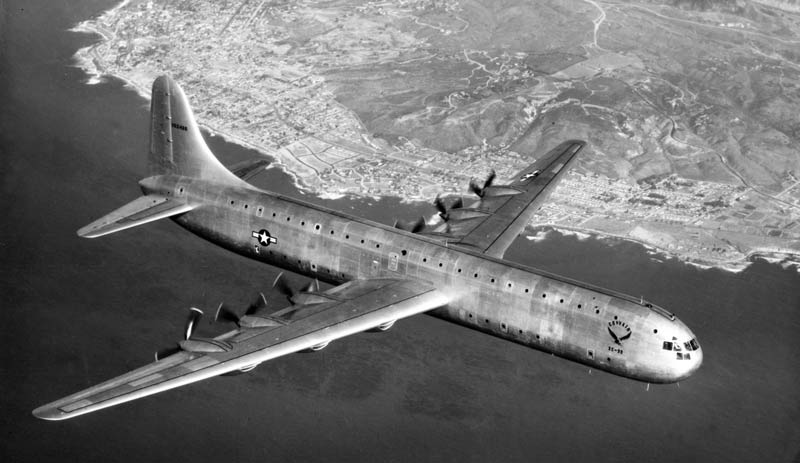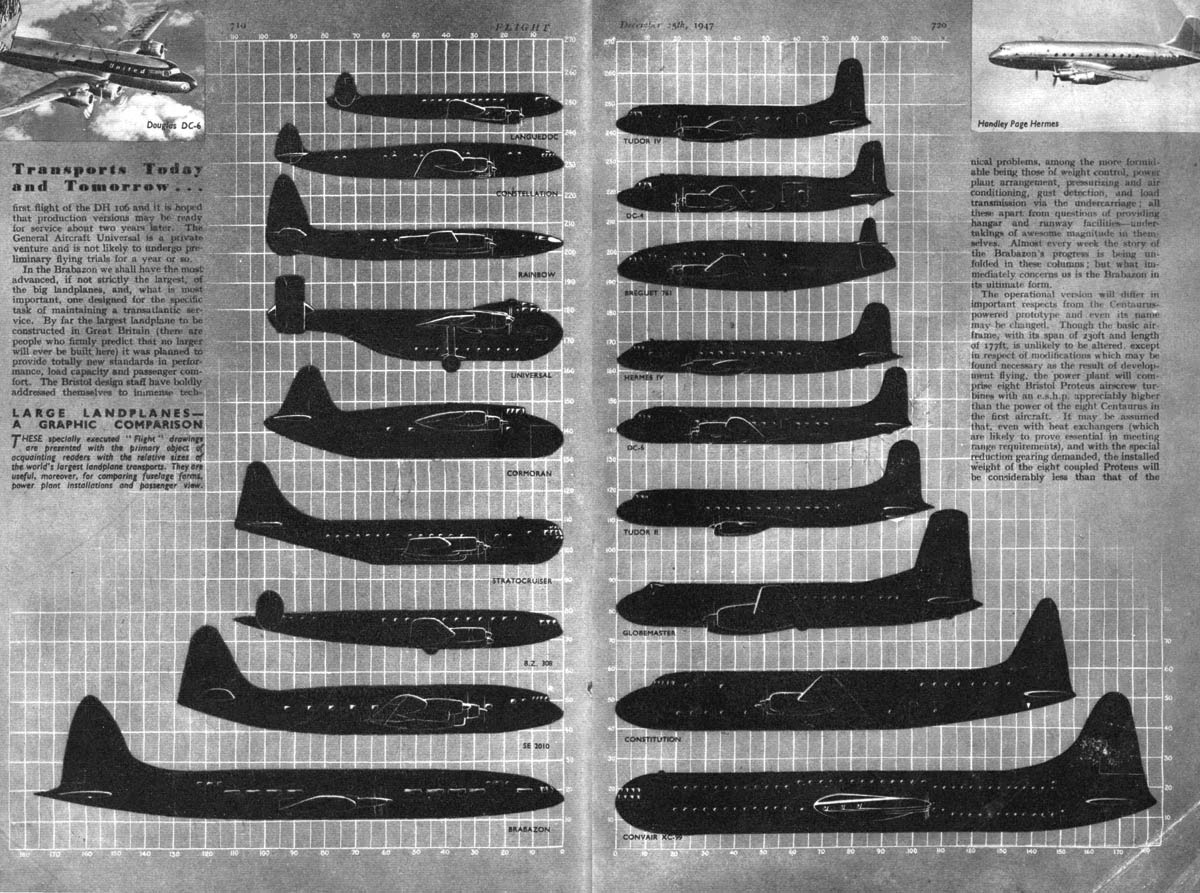Driven by the demand for ever-larger aircraft to carry troops during the Second World War, as the conflict drew to a close several very large transports were in development that – when adapted for civil use – promised a step-change in airline capacity. But despite their potential to drive air-travel growth, circumstances conspired to make these designs a false dawn, with the pace of technology rather than customer demand hampering their development.
The US aerospace industry emerged from the war with an impressive line-up of large, long-range piston-engined transports that included the graceful Lockheed Constellation and Douglas's workmanlike DC series of airliners. And work was well under way on giant land-planes that were almost double the size of these machines – although nothing in planning came close to out-classing in the size stakes the giant H-4 Hercules flying boat created during the war by the eccentric aviation entrepreneur Howard Hughes.

Developed for the US Navy, only two Lockheed Constitutions were built
US Navy
As peacetime began, Douglas and Lockheed were developing large piston-powered military transports, the Globemaster and Constitution, while Convair had set the bar even higher with its XC-99, derived from the B-36 bomber. In an article published in December 1947, Flight described these three transports as "some of the largest and most ambitious aircraft in the world".
Powered by four Pratt & Whitney Wasp pistons, the Constitution, which had two passenger decks, made it is first flight in November 1946 and was capable of seating about 160 passengers in airline configuration. The XC-99, which was also a double-decker and powered by Wasps (but six rather than four), flew 12 months later.
With a wingspan of more than 70m (230ft), Convair's planned civil variant, the Model 37, could seat more than 200 airline passengers. Reporting on the first flight of the XC-99, which weighed 120t (265,000lb) and was the world's largest land-plane, Flight wrote: "It is estimated that 90,000 spectators turned up at Lindbergh Field, San Diego, to watch the event."

The XC-99 and model 37 were based on the B-36
National Museum of the USAF
Not to be outdone by its transatlantic ally, the UK government had fired up its own transport-aircraft ambitions with a multi-pronged strategy that included a large propeller-driven long-range airliner, the Bristol Brabazon. However, unlike the US projects, this was intended ultimately to be powered by the emerging turboprop technology, rather than pistons.
In a 1947 analysis of the coming airliner designs, Flight reported that Convair's proposed Model 37 would be able to carry "204 passengers, with over 15,000lb of baggage, mail and freight, over 4,000 miles. It has been reported that Pan American Airways estimated that with a fleet of 15 such aircraft they could transport 750,000 passengers yearly across the Atlantic."
Despite all the promise, neither of these giant US transports found any takers, either in civil or military applications, as the piston era bowed out and engine designs reached the end of their growth potential. Commenting at the time, Flight said: "The design of large civil aircraft is temporarily stalled, marking time on the threshold of a new engineering epoch which awaits the post-gestation period of the gas turbine."
The giant Convair and Lockheed designs were too ahead of their time, and aircraft manufacturers found themselves in a holding pattern awaiting the embryonic turbine-engine era to become established, which would take at least a decade.
Flight summed up the predicament of these two giant transports succinctly in May 1948: "Quite obviously, then, this [lack of available piston-engine power] adds up to a vote of 'no confidence' in the two remaining big fellows in their present stage of development, since both the Lockheed Constitution and the Convair XC-99 are distinctly underpowered, at any rate as civil transports. Both were conceived during the war as military transports, which is hardly the ideal incubation for civil life.

A comparison chart published in Flight in December 1947
"The Constitution, however, does manage to retain most of the familiar Lockheed characteristics of good breeding and may possibly reach the more powerful turboprop stage when such engines become available in the USA.
"But one incredulous blink at the boxcar aerodynamics of the XC-99 shows that it can have no possible future as a commercial passenger transport, and we fancy that its makers have no intention of offering to airline operators, except perhaps as a cargo tramp."
Although the UK avoided the "piston trap" with the giant Bristol-designed Brabazon, its design would require no less than eight Bristol Proteus turboprops to achieve its transatlantic mission carrying 100 passengers in sublime luxury. Hindered by engine development problems, the huge airliner failed to secure any airline customers and was cancelled three years after the prototype flew in 1949.
Large-airliner development underwent a bit of a hiatus in the 1950s as propeller- and jet-turbine technology rapidly evolved. But the arrival of the turbofan at the turn of the 1960s saw the ensuing decade spawn ever-larger transport aircraft, starting with stretched Boeing 707 and Douglas DC-8 derivatives and culminating in the arrival of the original jumbo jet, the 747, in 1969.
Source: Flight Daily News
















